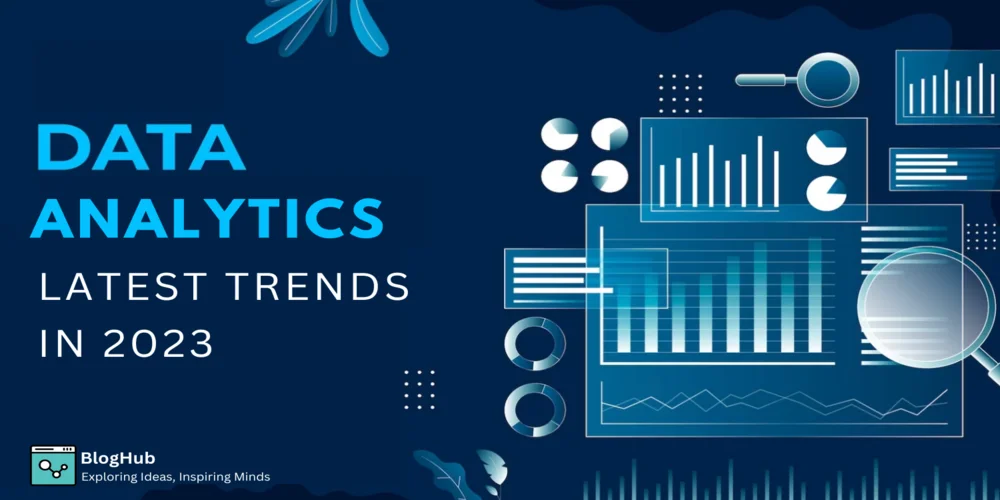In the ever-evolving landscape of technology, Data Analytics stands as a juggernaut, shaping industries, fostering innovation, and influencing decision-making. As we step into 2023, it’s essential to delve into the most recent trends in Data-Analytics, which have the potential to reshape how we leverage data for insights, strategy development, and achieving growth. Whether you are a beginner or experienced data enthusiast, this is the comprehensive guide which will walk you through the key trends. And also helpful in Shaping the Data-Analytics landscape in this year.
Introduction
In a world driven by data, the role of Data-Analytics cannot be overstated. It analyzes extensive datasets to reveal concealed patterns, undiscovered correlations, market trends, customer preferences, and other valuable business insights. As we delve into 2023, let’s embark on a journey through the latest trends in Data-Analytics that are reshaping industries and enabling data-driven strategies.
Some of the Latest Trends in Data-Analytics in 2023 include:
- Real-time analytics.
- Edge computing.
- Data-as-a-Service (DAAS).
- Renewable energy.
- Augmented analytics.
- Hybrid storage.
1. Real-Time Analytics: Pioneering Data-Analytics Trends In 2023
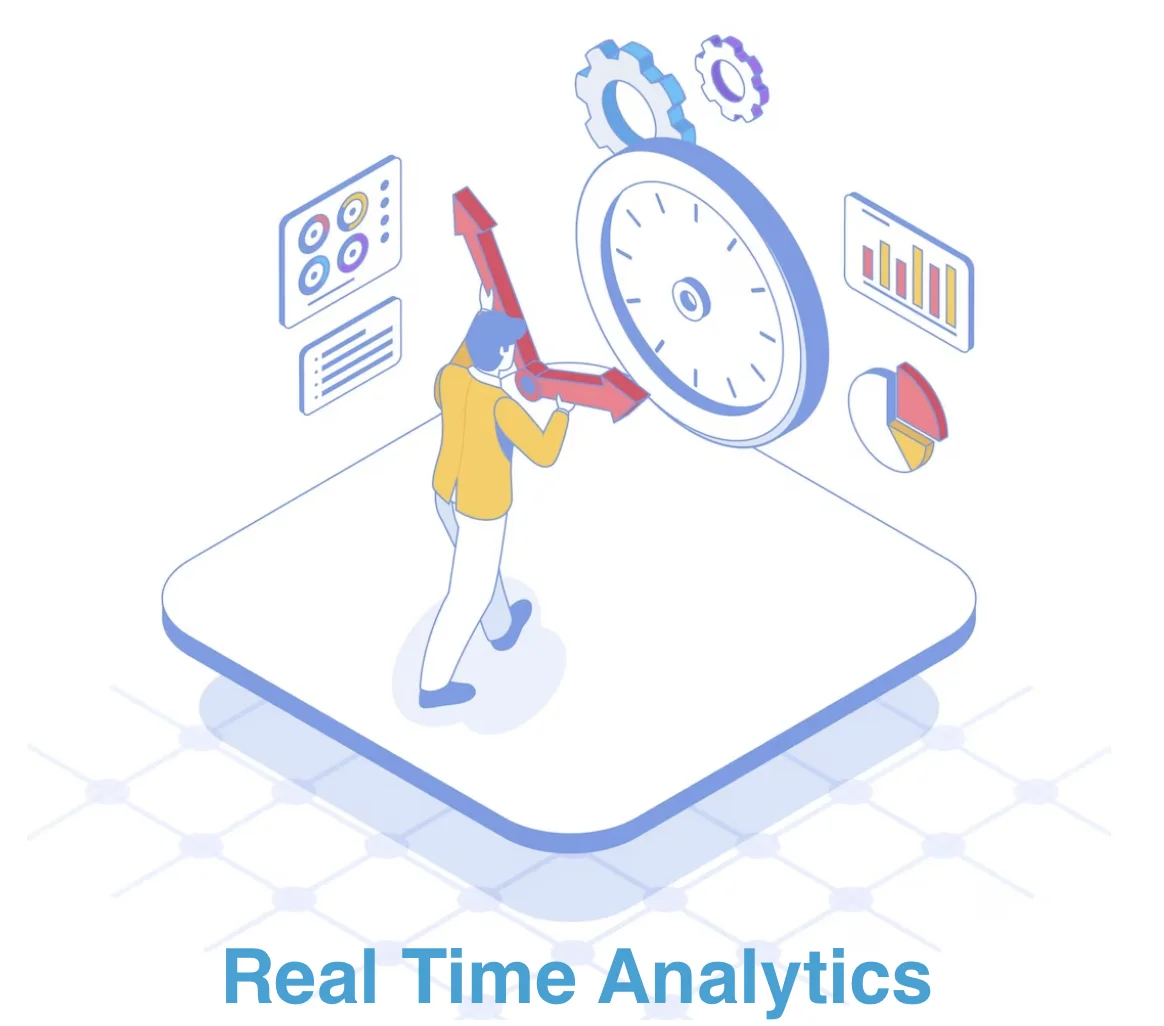
Staying at the forefront is essential in the constantly evolving field of Data-Analytics; one of the key trends dominating the stage in 2023 is real-time analytics. This groundbreaking approach to data analysis promises to reshape industries, enhance decision-making, and offer a competitive edge. This article delves into real-time analytics and its significance within the broader spectrum of Data-Analytics trends.
Understanding Real-Time Analytics
Real-Time Analytics is a paradigm that focuses on the immediate processing and analysis of data as it is generated or ingested. Unlike traditional batch processing, which involves analyzing data in the predefined intervals, real-time analytics operates here and now, providing insights within seconds or milliseconds of data creation.
Example: In the financial sector, real-time analytics can monitor market data and execute trades in fractions of a second to capitalize on market fluctuations.
The Role Of Real-Time Analytics In Data-Analytics Trends
1. Rapid Decision-Making
In an era where split-second decisions can define success, real-time analytics empowers businesses to make informed choices promptly and also it will improve decision making. This is particularly vital in the dynamic industries such as finance, e-commerce, and supply chain management.
Example: E-commerce platforms use real-time analytics to adjust pricing based on demand and competitor pricing changes, optimizing revenue.
2. Enhanced Customer Experiences
Delivering tailored experiences to customers is a cornerstone of modern business. Real-time analytics enables organizations to analyze customer behavior in real-time, providing personalized recommendations and support.
Example: Streaming platforms use real-time analytics to suggest content, keeping users engaged and satisfied.
3. Predictive Maintenance
Industries relying on machinery, such as the manufacturing and utilities, benefit significantly from predictive maintenance. Real-time data analysis will detects anomalies and predicts when equipment requires maintenance, reducing downtime.
Example: Airlines use real-time analytics to monitor aircraft health, ensuring passenger safety and operational efficiency.
4. IoT-Driven Insights
As IoT devices proliferate, real-time analytics becomes essential for processing the continuous data stream they generate. This trend is pivotal in various sectors, including smart cities, healthcare, and agriculture.
Example: Smart agriculture employs real-time analytics to monitor soil conditions and automate irrigation, optimizing crop yields.
5. Fraud Detection And Security
In the cybersecurity realm, real-time analytics serves as a vigilant guardian. It detects unusual patterns, identifies potential threats, and initiates immediate responses to prevent data breaches and cyberattacks.
Example: Financial institutions employ real-time analytics to detect fraudulent transactions and protect customer accounts.
Implementing Real-Time Analytics
To leverage the potential of real-time analytics, organizations must consider the following:
1. Data Integration
Integrating data sources in real-time is essential. This involves connecting various data streams, databases, and applications to ensure a continuous data flow for analysis.
2. Scalability
Real-time analytics solutions should be scalable to accommodate growing data volumes and user demands. Scalability ensures uninterrupted performance as data complexity increases.
3. Data Quality
Maintaining data accuracy and quality is paramount. Only accurate or complete data can lead to fundamental insights and decisions.
4. User Training
Training users and data analysts ensure they can harness real-time analytics tools’ full potential.
2. Edge Computing: Revolutionizing Data-Analytics In 2023
Staying ahead of the curve is essential in the ever-evolving Data-Analytics landscape. While the trends in Data-Analytics for 2023 are highly anticipated, one paradigm that’s gaining significant traction is edge computing. This transformative technology is poised to revolutionize Data-Analytics, ushering in a new era of efficiency and real-time decision-making. In this article, we explore the convergence of edge computing and Data-Analytics, unveiling the potential and applications of this powerful duo.
Understanding Edge Computing
Edge computing is a distributed computing model that brings data processing and analysis closer to the network’s data source or “edge” rather than relying solely on centralized cloud servers. Data is processed locally, often on devices or gateways, reducing latency and enabling real-time analysis.
Example: In autonomous vehicles, edge computing processes sensor data onboard to make instant driving decisions.
The Synergy Between Edge Computing And Data-Analytics
1. Reduced Latency For Real-Time Insights
Edge computing’s primary benefit is its ability to provide real-time insights. Through data analysis at the edge, organizations can swiftly make critical decisions, a vital factor in time-sensitive applications like autonomous vehicles, industrial automation, and healthcare monitoring.
Example: In a smart factory, edge computing analyzes sensor data in real-time, optimizing manufacturing processes and minimizing downtime.
2. Bandwidth Optimization
Transmitting vast data to centralized servers for analysis can strain network resources. Edge computing alleviates this burden by processing data locally, sending only valuable insights to the cloud. This bandwidth optimization is particularly valuable in remote or resource-constrained environments.
Example: In agriculture, edge devices analyze soil moisture data on-site, transmitting only critical information to the cloud, conserving bandwidth.
3. Enhanced Security And Privacy
Data security is a paramount concern in the digital age. Edge computing enhances security by keeping sensitive data localized, reducing the risk of data breaches during transmission to the cloud. This is especially crucial in sectors like healthcare and finance.
Example: Healthcare wearable devices use edge computing to process patient data securely, ensuring privacy compliance.
4. Scalability And Flexibility
Edge computing solutions are highly scalable and adaptable. Organizations can quickly deploy additional edge devices to accommodate growing data volumes and evolving analytics requirements.
Example: Retailers employ edge computing for real-time inventory management, efficiently scaling the solution during peak shopping seasons.
5. Autonomous Decision-Making
In applications with critical split-second decisions, edge devices equipped with artificial intelligence (AI) and machine learning (ML) algorithms can make autonomous choices based on real-time data analysis.
Example: Autonomous drones use edge computing to analyze terrain data, making instant navigation decisions.
Implementing Edge Computing In Data-Analytics
1. Identify Data Sources
Identify the data sources that would benefit most from local processing. These could include IoT devices, sensors, cameras, and more.
2. Choose The Right Hardware
Select appropriate edge devices or gateways capable of processing and analyzing data efficiently. Consider factors like computing power and connectivity options.
3. Develop Edge Analytics Applications
Create or deploy analytics applications that can run on edge devices. These applications should be designed to provide meaningful insights in real-time.
4. Ensure Data Security
Implement robust security measures to protect data at the edge. Encryption, access controls, and regular updates are essential components.
5. Integrate With Cloud Analytics
Integrate edge analytics seamlessly with cloud-based platforms to harness local and centralized processing benefits.
3. Data-As-A-Service (DAAS): Powering The Future Of Data-Analytics In 2023
As we venture into the data-driven landscape of 2023, it’s abundantly clear that data is the lifeblood of modern businesses. Accessing, analyzing, and deriving insights from data is critical. In this context, Data-as-a-Service (DAAS) emerges as a transformative force, promising to reshape the world of Data-Analytics. This article delves into the intricacies of DAAS and its pivotal role in the latest trends in Data-Analytics for 2023.
Understanding Data-As-A-Service (DAAS)
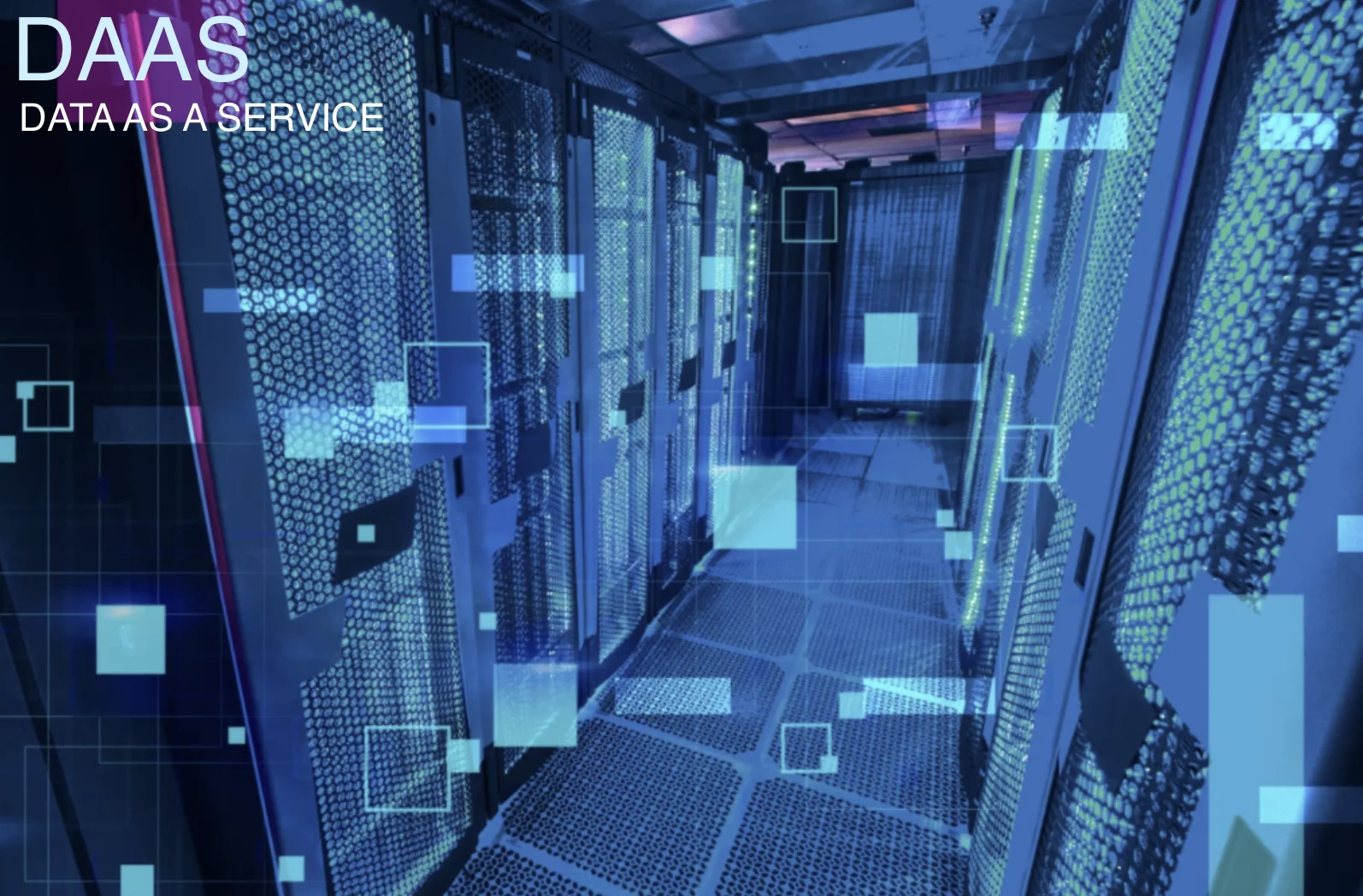
At its core, DAAS is a cloud-based service that provides on-demand access to data, allowing organizations to tap into a vast pool of information without the need for extensive infrastructure or data management. It offers real-time access to structured and unstructured data, enabling businesses to make informed decisions swiftly.
Example: A retail business subscribing to a DAAS platform can access real-time sales data, inventory levels, and customer behavior insights.
The Synergy Between DAAS And Data-Analytics
1. Real-Time Data Access
One of the primary advantages of DAAS is its ability to provide real-time data access. This is invaluable for Data-Analytics, as it ensures decision-makers can access the most current information when making crucial choices.
Example: In financial services, DAAS enables traders to access real-time market data for instantaneous decision-making.
2. Scalability And Flexibility
As businesses expand, so does their data. DAAS platforms are highly scalable, allowing organizations to adjust their data access and processing capabilities according to their evolving analytics requirements.
Example: An e-commerce platform experiences increased traffic during holiday seasons; DAAS can seamlessly scale to accommodate higher data volumes.
3. Cost Efficiency
Traditionally, setting up and maintaining data infrastructure is expensive. DAAS eliminates this burden by offering a pay-as-you-go model, reducing operational costs.
Example: Startups can leverage DAAS to access valuable data resources without prohibitive costs.
4. Enhanced Data Quality
Data quality is paramount for effective analytics. DAAS providers typically maintain rigorous data quality standards, ensuring that the data accessed by organizations is accurate and reliable.
Example: Healthcare organizations rely on DAAS for accurate patient data to make critical medical decisions.
5. Integration With Analytics Tools
DAAS platforms are designed to work seamlessly with popular Data-Analytics tools, facilitating data ingestion, analysis, and visualization.
Example: Data scientists use DAAS with tools like Python or R to perform advanced analytics.
Implementing DAAS In Data-Analytics
1. Identify Data Needs
Determine the specific data needs of your organization. What data is essential for your analytics goals? Be clear about your objectives.
2. Choose The Right DAAS Provider
Select a DAAS provider that aligns with your data requirements, including data types, sources, and volume. Consider factors like security and compliance.
3. Data Integration
Integrate the DAAS solution with your existing Data-Analytics infrastructure and tools. Ensure smooth data flow between sources and analytics platforms.
4. Data Governance
Implement robust data governance practices to maintain data quality and security. Define roles and responsibilities within your organization.
5. Monitor And Optimize
Regularly monitor the performance of your DAAS solution and make optimizations as needed to align with changing business needs.
4. The Role Of Data-Analytics In Powering Renewable Energy: Trends In 2023
In the ever-evolving landscape of renewable energy, Data-Analytics emerges as a transformative force, redefining how we harness and optimize sustainable power sources. As we delve into the latest trends of 2023, it becomes increasingly evident that integrating data-analytics with renewable energy technologies is a game-changer. This article explores how data-analytics shapes the renewable energy sector and drives its growth.
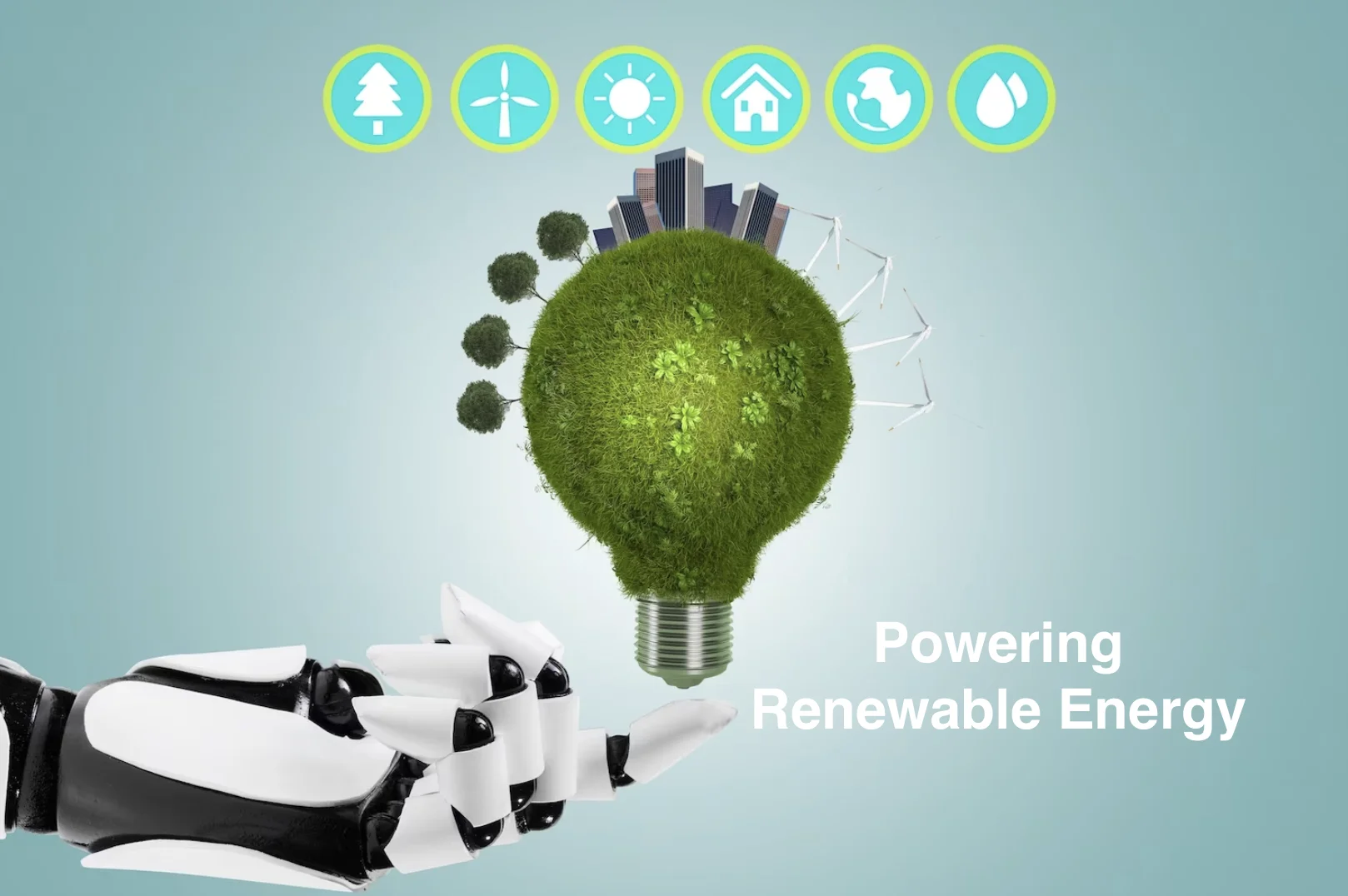
Understanding The Intersection: Data-Analytics And Renewable Energy
Data-analytics encompasses the gathering, processing, and examining of extensive data volumes to derive valuable insights. In the context of renewable energy, this means leveraging data to enhance power generation and distribution efficiency, reliability, and sustainability.
Example: Wind farms use data-analytics to predict wind patterns, optimize turbine performance, and reduce downtime.
The Synergy Between Data-Analytics And Renewable Energy
1. Predictive Maintenance
One of the most significant advantages of data-analytics in renewable energy is predictive maintenance. By analyzing real-time data from equipment and sensors, operators can predict when maintenance is required, preventing costly breakdowns and optimizing asset lifespan.
Example: Solar farms use data-analytics to monitor the performance of photovoltaic panels and schedule cleaning or repairs proactively.
2. Energy Forecasting
Data-analytics models shine when forecasting energy generation from renewable sources like solar and wind. This enables grid operators to balance supply and demand effectively, reducing reliance on non-renewable backup sources.
Example: Weather data and historical energy production patterns inform solar farm analytics to predict energy generation accurately.
3. Grid Optimization
Data-analytics helps optimize energy distribution and grid management. This is crucial as renewable energy sources can be intermittent, and efficient grid management ensures minimal energy wastage.
Example: Smart grids use real-time data to reroute energy flow and reduce losses during transmission.
4. Cost Reduction
Renewable energy providers can significantly reduce operational costs by optimizing maintenance schedules, energy forecasting, and grid operations. This cost efficiency is vital for making renewable energy more competitive.
Example: Wind farms employ data-analytics to monitor turbine performance and reduce operational expenses.
5. Environmental Impact
By enhancing the efficiency of renewable energy systems, data-analytics indirectly reduces the environmental impact of energy production. This aligns with the broader goal of sustainable energy practices.
Example: Hydroelectric plants use data-analytics to optimize water release schedules, minimizing disruption to aquatic ecosystems.
Implementing Data-Analytics In Renewable Energy
1. Data Collection
Collect relevant data from renewable energy sources, equipment sensors, and weather stations. Ensure data accuracy and consistency.
2. Data Storage And Processing
Set up robust data storage and processing infrastructure, including data warehouses and analytics platforms.
3. Analytics Models
Develop or acquire analytics models tailored to your specific needs, whether predictive maintenance or energy forecasting.
4. Integration With Operations
Integrate data analytics seamlessly into your renewable energy operations, ensuring that actionable insights are used to drive decision-making.
5. Continuous Improvement
Regularly assess and refine your data-analytics strategy to keep pace with evolving technologies and data sources.
5. Augmented Analytics: Transforming Data-Analytics In 2023
In the fast-paced realm of data-analytics, the emergence of augmented analytics is poised to revolutionize how organizations derive insights from their data. As we delve into the latest trends of 2023, it becomes evident that augmented analytics is becoming an indispensable tool for businesses striving to unlock the full potential of their data.
Understanding Augmented Analytics In The Context Of Data-Analytics
Augmented analytics represents the fusion of artificial intelligence (AI) and machine learning (ML) technologies with traditional data-analytics. It aims to automate data preparation, insights generation, and decision-making processes, making data-analytics more accessible and valuable to a broader audience.
Example: Augmented analytics tools can automatically detect anomalies in financial data, flagging potential fraud.
The Key Trends In Augmented Analytics For 2023
1. Automated Data Preparation
Data preparation, often a time-consuming and error-prone task, is being transformed by augmented analytics. Advanced algorithms can now automatically clean, structure, and integrate data from various sources, reducing the time required for this crucial step.
Example: An augmented analytics platform can ingest data from spreadsheets, databases, and cloud sources, harmonizing them for analysis.
2. Natural Language Processing (NLP)
NLP capabilities allow users to interact with data-analytics platforms using everyday language. This democratizes data access, enabling users without a technical background to query data and receive insights effortlessly.
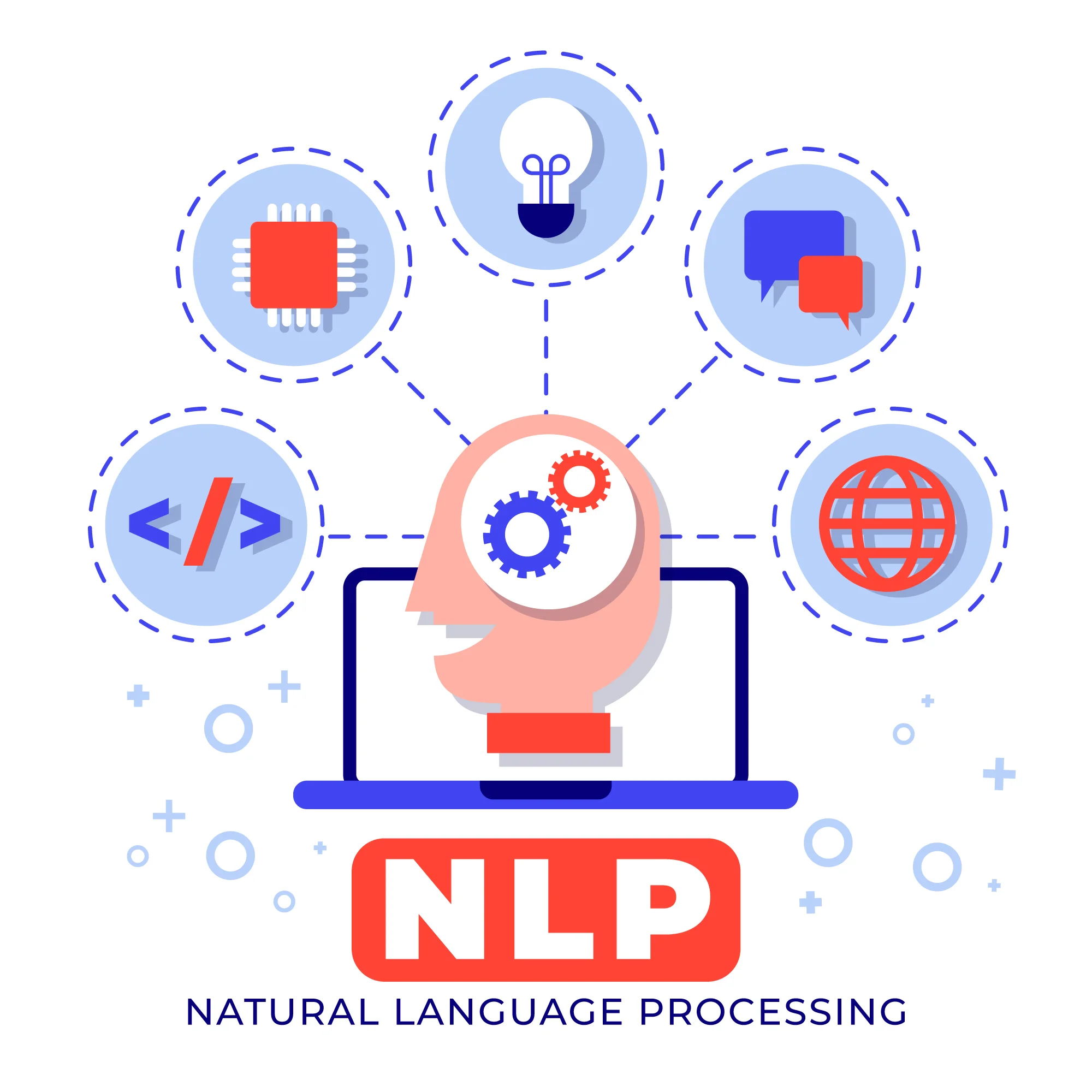
Example: Users can ask, “What were our top-selling products last quarter?” and receive a visualized answer.
3. Smart Data Discovery
Augmented analytics can now automatically identify patterns, trends, and outliers in data. This empowers users to make data-driven decisions rapidly, as they no longer need to sift through massive datasets manually.
Example: An e-commerce manager can quickly discover which products have an unusual sales spike, prompting further investigation.
4. AI-Driven Predictive Analytics
Augmented analytics is leveraging AI and ML to predict future trends and outcomes more accurately. This is invaluable for businesses looking to stay ahead of the competition and adapt swiftly.
Example: A marketing team can use predictive analytics to forecast customer churn and take preemptive measures.
5. Advanced Data Visualization
Augmented analytics tools now offer advanced data visualization capabilities, making it easier for users to explore and present their findings effectively. Interactive and user-friendly dashboards are becoming the norm.
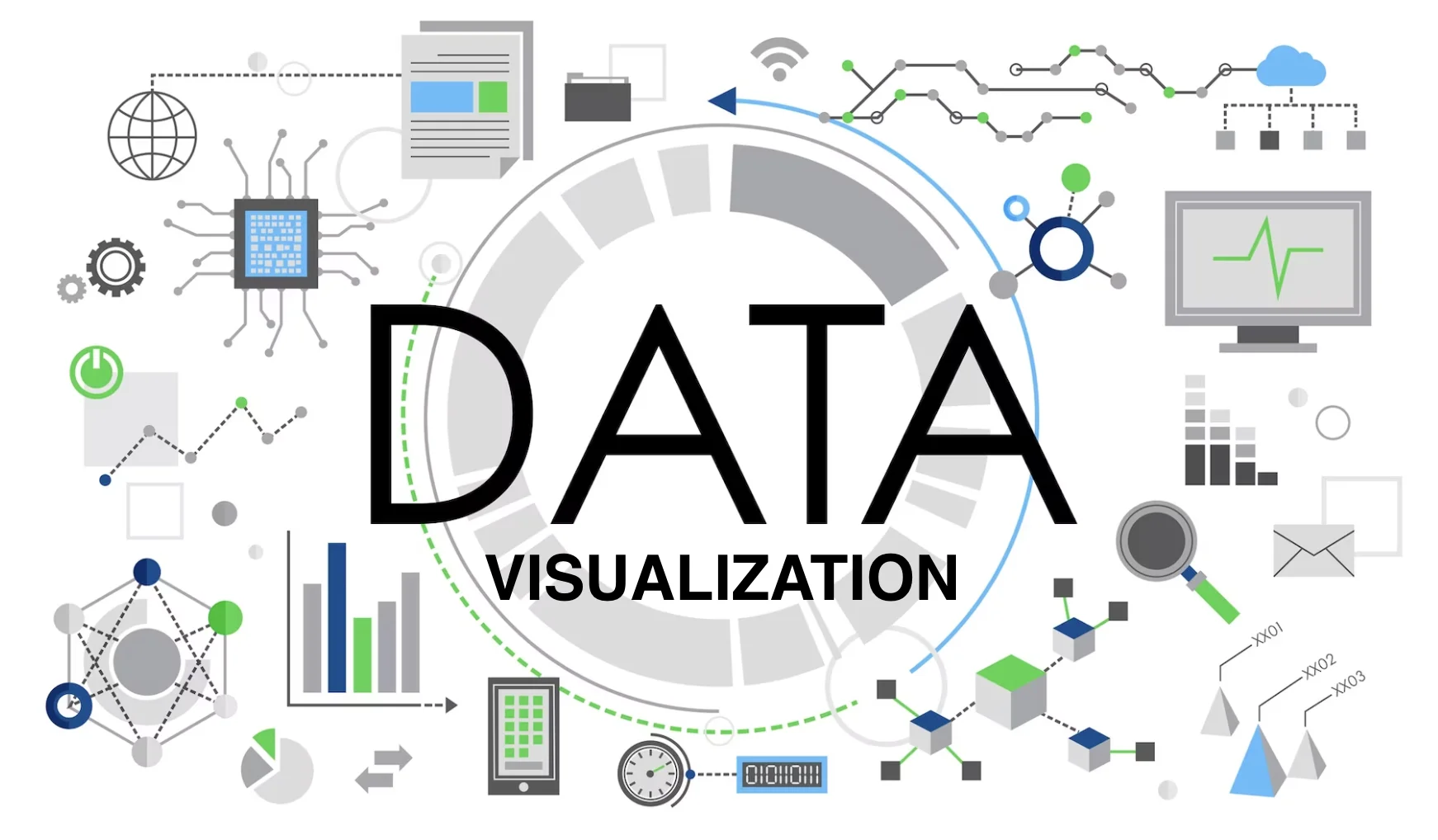
Example: A sales manager can create a real-time dashboard to monitor sales performance across regions.
Implementing Augmented Analytics In Your Organization
1. Assess Your Needs
Start by identifying your organization’s specific analytics requirements. Determine the areas where augmented analytics can provide the most significant value.
2. Choose The Right Tools
Select augmented analytics platforms or tools that align with your goals. Take into account factors like user-friendliness, scalability, and integration capabilities.
3. Data Integration
Ensure your data sources are integrated into the augmented analytics platform, allowing seamless data access and analysis.
4. User Training
Provide training to your teams, emphasizing using NLP interfaces and other augmented analytics features.
5. Monitor And Refine
Continuously monitor the impact of augmented analytics on your organization’s decision-making processes. Make adjustments and refinements as needed.
6. Unleashing The Power Of In Data-Analytics: 2023 Trends
One trend in the ever-evolving data-analytics landscape stands out prominently in 2023 – hybrid storage. This game-changing technology is reshaping the way organizations manage, access, and analyze their data, offering a potent solution to the data deluge that modern businesses face.
Understanding Hybrid Storage
Hybrid storage combines the attributes of both on-premises (local) and cloud storage solutions. It’s a strategic approach that allows organizations to store their data flexibly, ensuring optimal performance, scalability, and cost-effectiveness.
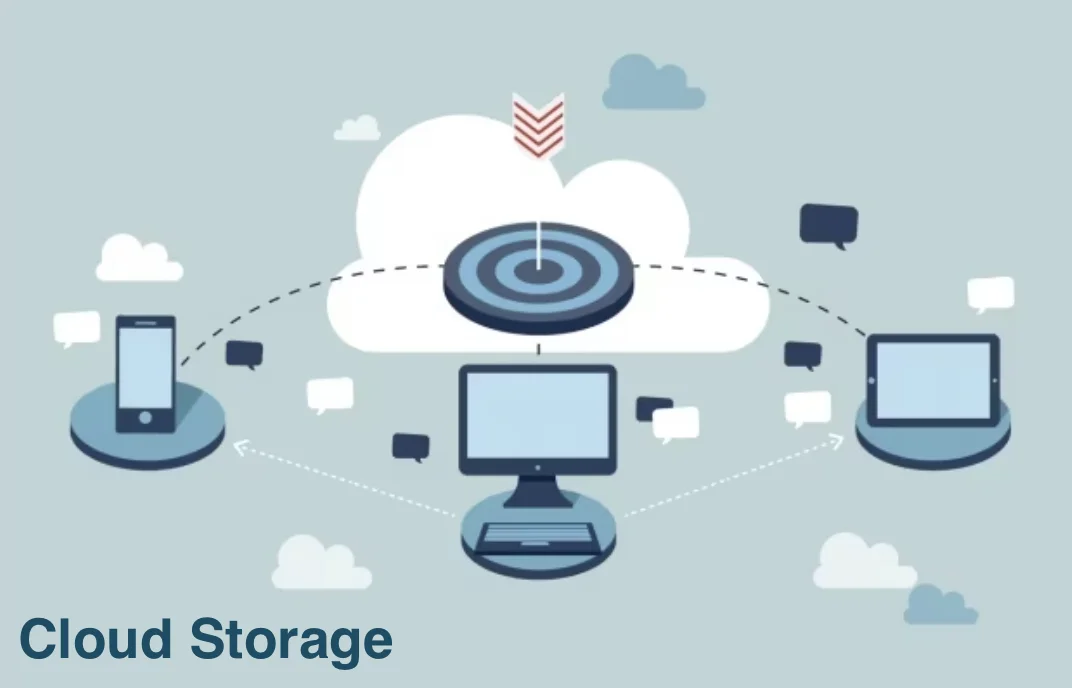
Example: A retail company can store its historical sales data on-premises for quick access and use the cloud for storing less frequently accessed data.
Key Advantages Of Hybrid Storage In Data-Analytics
1. Scalability
Hybrid storage offers unparalleled scalability. Businesses can effortlessly scale their storage capacity up or down based on their evolving needs, ensuring they always have room for expanding datasets.
Example: An e-commerce platform can seamlessly accommodate increased customer transaction data during holiday sales spikes.
2. Cost Efficiency
Organizations can optimize their storage costs by combining local storage with cloud solutions. They pay for what they use in the cloud, reducing the need for extensive on-premises storage infrastructure.
Example: A startup can manage its data efficiently without incurring hefty upfront costs for extensive on-premises servers.
3. Data Accessibility
Hybrid storage ensures data is accessible from anywhere, anytime. This is crucial for data-analytics, as it enables analysts and data scientists to work with data no matter where they are located.
Example: A global corporation can grant remote teams access to the same dataset for collaborative analysis.
4. Disaster Recovery
Hybrid storage provides robust disaster recovery capabilities. Data stored in the cloud is a backup, safeguarding critical information in case of on-premises disasters.
Example: A financial institution can quickly recover customer data if a physical data center fails.
5. Performance Optimization
Hybrid storage allows organizations to fine-tune performance. Frequently accessed data can reside on local storage for lightning-fast retrieval, while less often used data can be stored cost-effectively in the cloud.
Example: A healthcare provider can retrieve patient records swiftly for real-time medical analysis.
Implementing Hybrid Storage In Data-Analytics
1. Assess Data Needs
Start by evaluating your data-analytics requirements. Identify which data should reside on local storage for performance reasons and which can be stored in the cloud for efficiency.
2. Choose The Right Providers
Select reputable providers for both on-premises and cloud storage solutions. Consider factors like security, reliability, and scalability.
3. Data Migration
Plan a seamless data migration strategy to transfer existing data to the hybrid storage environment. Ensure data integrity and minimal disruption during the process.
4. Data Classification
Categorize your data based on usage patterns. Define policies to automate data movement between on-premises and cloud storage.
5. Data Security
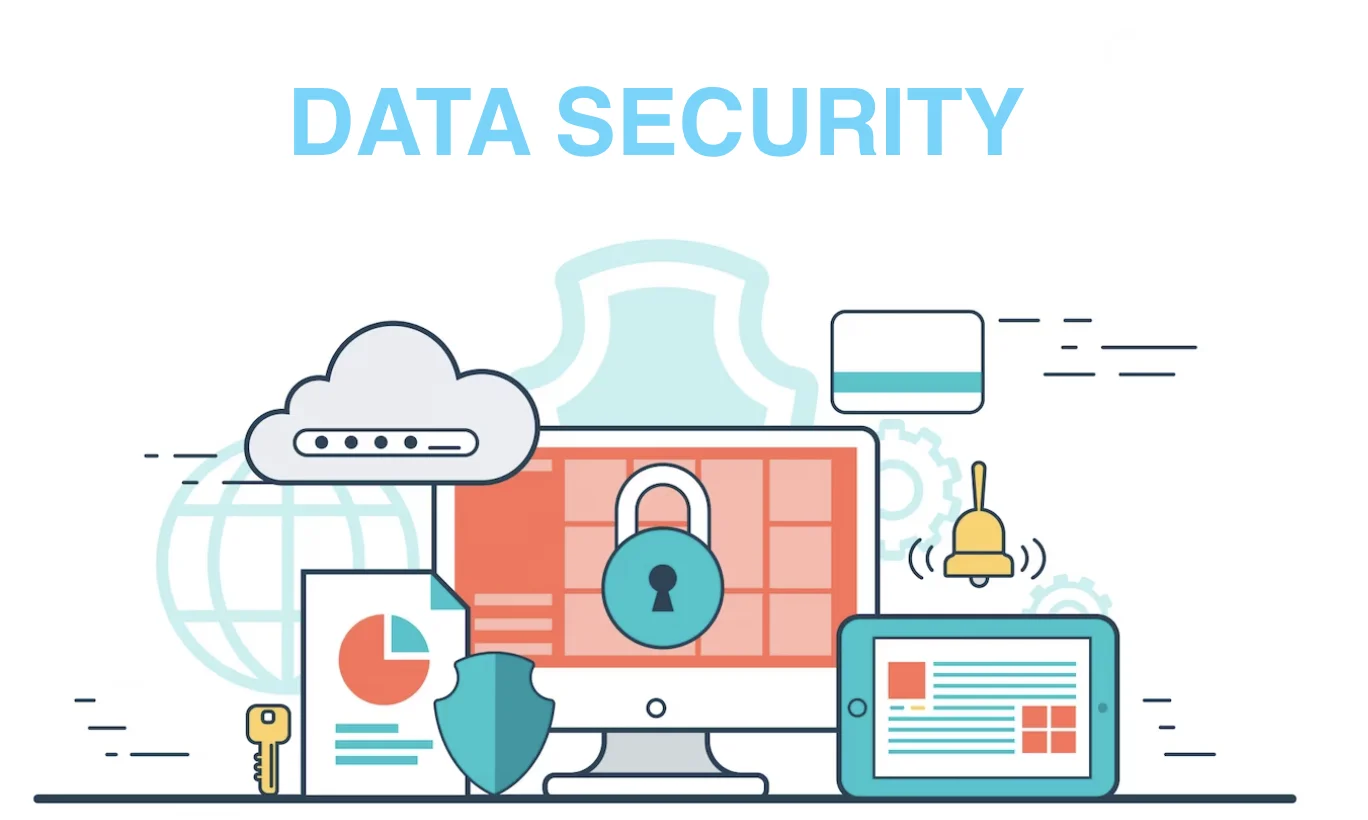
Implement robust security measures to protect data on-premises and in the cloud. Encryption, access controls, and monitoring are critical.
FAQs
Q: How does artificial intelligence impact data-analytics in 2023?
Answer: AI enhances data-analytics by automating tasks, enabling predictive analytics, and uncovering valuable insights from vast datasets.
Q: What challenges do organizations face when adopting data-analytics trends in 2023?
Answer: Common challenges include data security, talent shortages, and data integration complexities, which require strategic solutions.
Q: Where can professionals find additional insights on data-analytics trends for 2023?
Answer: Explore online communities, industry publications, and specialized conferences to stay informed about the most recent trends and best practices in data-analytics.
Q: How does artificial intelligence impact data-analytics in 2023?
Answer: AI enhances data-analytics by automating tasks, enabling predictive analytics, and uncovering valuable insights from vast datasets.
Q: Why is real-time analytics gaining traction in 2023?
Answer: Real-time analytics enables businesses to make immediate decisions, track changing customer behavior, and respond swiftly to market shifts.
Q: What is the future of data analysis in 2023?
Answer: In 2023, data analysts will see a growing demand for their skills. They’ll work with advanced technologies, focusing on real-time analytics and data security. Soft skills, adaptability, and lifelong learning will be crucial as they navigate a dynamic and promising career landscape.
Q: Will data analyst be replaced by AI 2023?
Answer: While AI will assist data analysts, it won’t replace them in 2023. Data analysts will still be crucial for interpreting results, ensuring data quality, and making strategic insights-based decisions. AI and data analysts will complement each other, enhancing the efficiency and depth of data analysis.
Q: What is the new data technology in 2023?
Answer: In 2023, Quantum Computing is poised to revolutionize data technology. Its immense processing power will tackle complex data analysis tasks, accelerating scientific discoveries, cryptography, and optimizing supply chains. Quantum computing promises groundbreaking solutions across various industries, ushering in a new era of data technology.
Conclusion
The world of Data-Analytics is dynamic and ever-evolving. As we journey through 2023, AI-powered analytics, extensive data management, ethical considerations, edge computing, and domain-specific applications are poised to dominate the landscape. It’s essential to embrace these trends and harness the power of Data-Analytics to drive innovation, efficiency, and informed decision-making.
In a data-driven world, those who master the art of Data-Analytics are poised to thrive. The journey is in its early stages, and the potential is boundless.
In summary, 2023 holds the promise of an exhilarating year for Data-Analytics, with groundbreaking innovations reshaping the landscape of businesses and industries. Embracing these trends is not just a choice but necessary in the data-driven era.
For more information on Data-Analytics, please write to us and let us know which topic you need more information about.

